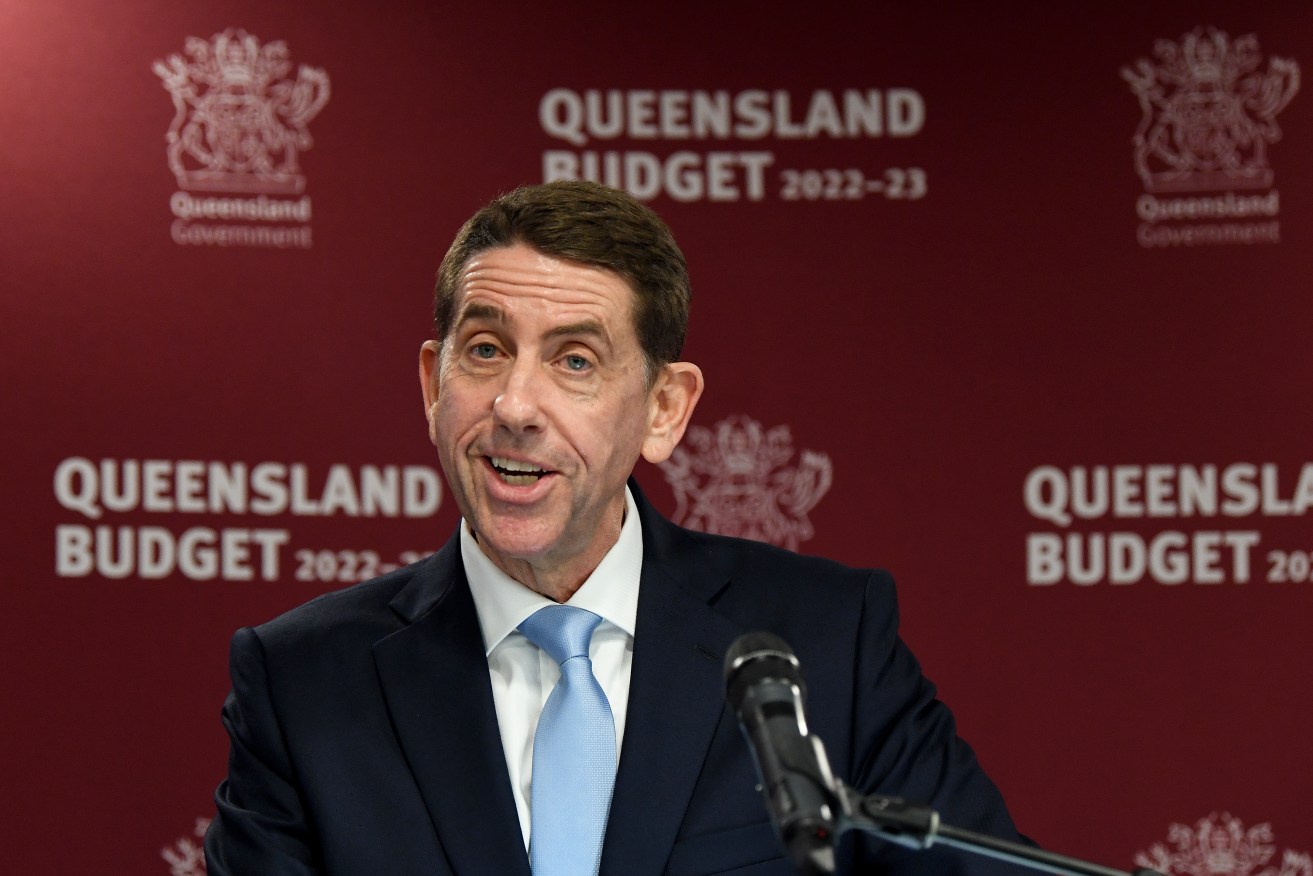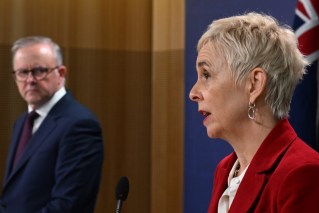Steaming ahead: King coal drives state’s economic engine to record surplus
Queensland’s economy grew 4.4 per cent in 2021-22, running ahead of national GDP growth and fuelling a record $5.2 billion surplus forecast for the remainder of the financial year.


An upbeat Queensland Treasurer Cameron Dick. (AAP Image/Darren England)
The record result comes via higher resources royalties off the back of global coal and oil price surges.
But Treasurer Cameron Dick has warned in his mid-financial year budget update released on Wednesday that the roaring conditions flowing from the resources sector will not last.
“Today’s record surplus is a high-water mark that won’t be sustained, so we’re reinvesting responsibly, building stronger buffers in times of international uncertainty,” he told guests at the Queensland Media Club in Brisbane.
Geopolitical headwinds on the domestic and international fronts, coupled with ongoing climate challenges, tempered the treasurer’s ebullient outlook.
“Extreme international volatility continues to pose a real threat to economic growth, with the ripples of conflict in Europe felt all across Queensland,” he said.
“A tight labour market and the floods have limited domestic supply contributing to inflation forecasts for 2022-23 rising from 3.75 per cent in the June Budget to 5.75 per cent, with wages growth slightly stronger than at budget.”
With national GDP growth at 3.6 per cent, Dick said Queensland now led as Australia’s strongest economy, with net debt expected to be $5.238 billion lower than was forecast in the 2022-23 budget.
Total revenue has been revised upwards by $7.341 billion for 2022-23 and $2.742 billion in 2023-24.
But the contribution from coal also had to share the limelight with agriculture.
“Our traditional resources, agriculture and manufacturing sectors continue to perform strongly,” Dick said.
“It is particularly pleasing the volume of agricultural exports rose by 15 per cent in 2021-22, driven by increases in crops including cotton.
“In this financial year cotton exports are expected to grow strongly again, with sugar exports returning to normal levels and beef production growing as well.”
With regional Queensland enlarging the treasury chest, Dick has promised to invest $3 billion into future regional projects, with the resources-rich regions of Isaac, home to the Adani mine and the Central Highlands, Banana, Western Downs and Whitsunday local government areas in line for big ticket spending.
“It’s important to re-invest back in the resources communities that deliver for all of Queensland through the royalties their mines generate,” Dick said.
“Projects forming part of the Queensland Energy and Jobs Plan will be funded including supporting workers in Queensland’s publicly owned coal-fired power stations ($150 million) and Regional Economic Futures ($200 million), which will have a special focus on coal-producing regions.
“To position Queensland to ride the wave of the next resources boom, $100 million will be put aside for a new Queensland Critical Minerals Investment Fund and $150 million will support critical minerals development via Common User Infrastructure projects.
“This will create more jobs as we harness north-west Queensland’s abundant critical mineral deposits to supply surging global demand for resources that are critical to manufacturing renewable energy technologies such as batteries, hydrogen electrolysers, and electric vehicles.”
The state’s four per cent unemployment rate is expected to rise marginally to 4.25 per cent and the current 5.75 per cent inflation rate is expected to fall to 2.75 per cent by 2023/24.












